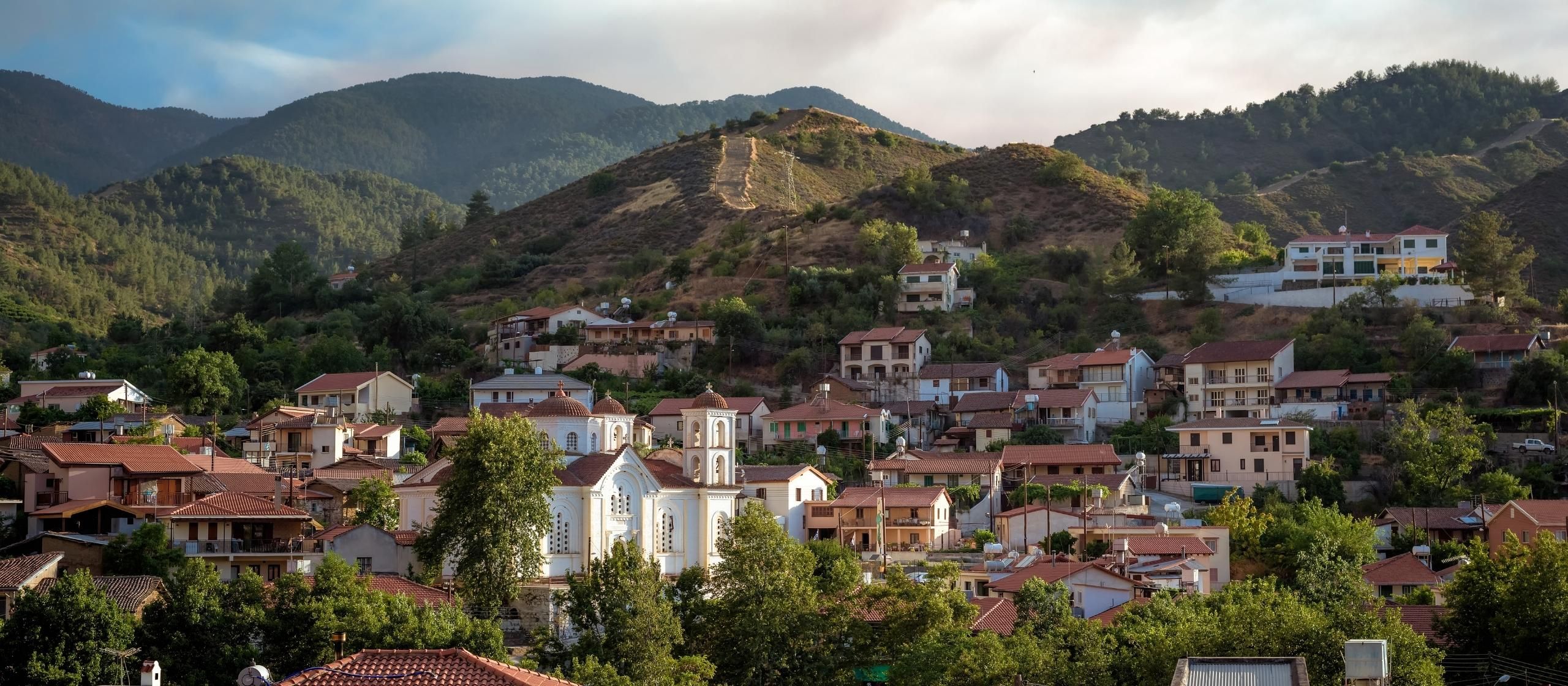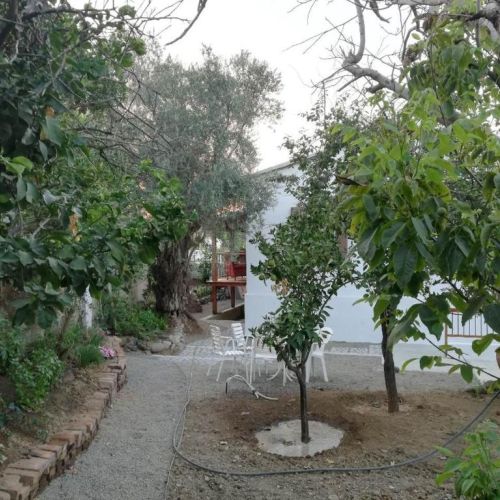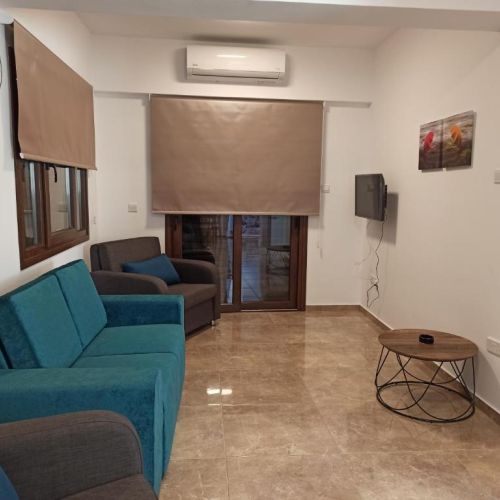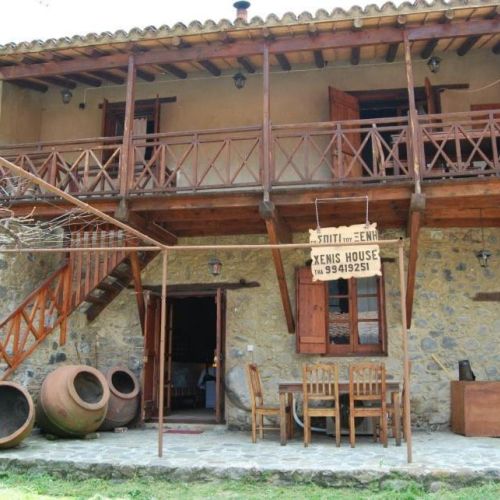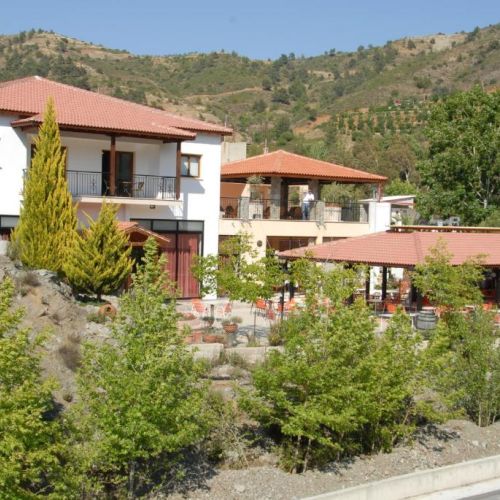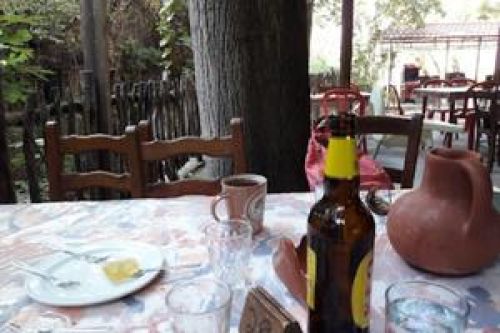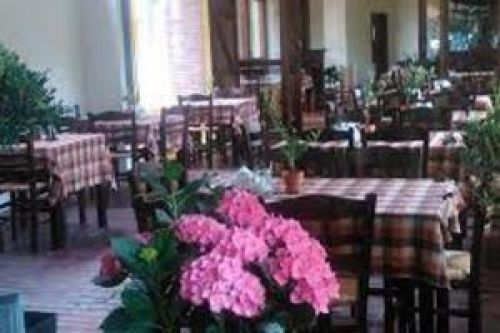The beautiful village of Galata
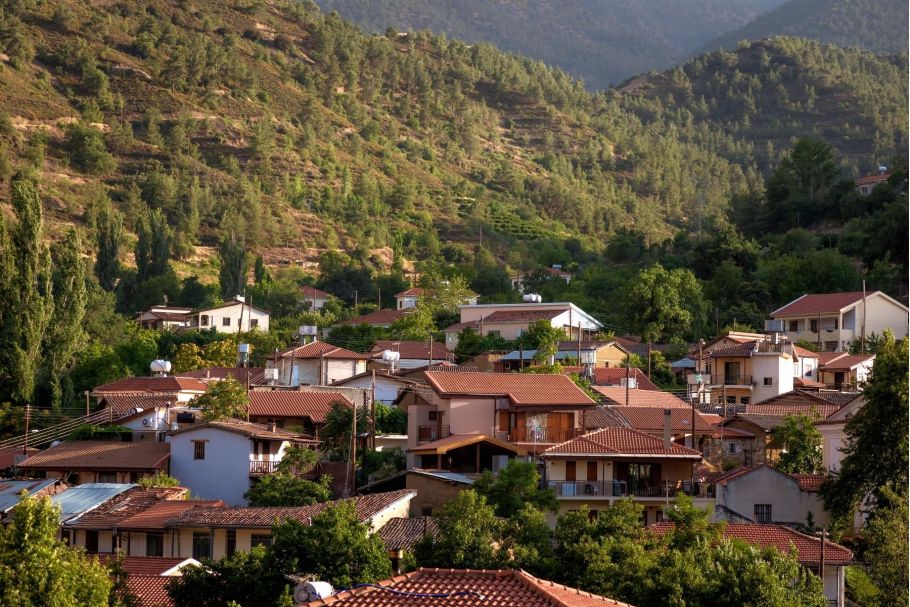
Galata is located 60 kilometres west of Nicosia in the beautiful valley of Solea. It has an altitude of 620 metres above sea level. It is built in the two banks of the River Klarios that crosses through it and it is literally drowning in green. It is conjunct with the neighbouring community of Kakopetria.
Galata Village
Galata is located 60 kilometres west of Nicosia in the beautiful valley of Solea. It has an altitude of 620 metres above sea level.
It is built in the two banks of the River Klarios that crosses through it and it is literally drowning in green. It is conjunct with the neighbouring community of Kakopetria. Both these twin hamlets receive thousands of tourists throughout the year.
Galata is famous for its tasty fruits that it produces in large quantities, especially apples of every variety, apricots, peaches, cherries, damsons, grapes, and others, as well as a variety of fresh vegetables.
If one wants to enjoy a few unforgettable summer moments in Galata, he / she must sit at the village’s plaza. There, in the shadow of the age-old oak and the plane-trees with the Kargotis (Klarios) River, he / she will have unforgettable moments.
The houses of Galata -both the modern and the traditional ones -possess grace and beauty. One is particularly impressed by the wooden balconies and the wooden stairs of the old, traditional houses.
The tiled, inclined roofs, the local stone with which the houses’ walls are made, the latches and bolts, the gateways with their wooden transoms, all these are unfeigned witnesses of contrived folkloric architecture, which is unfortunately dying away as time goes by.
Chiefly however, what is found here is an excellent cultural heritage. The six Byzantine churches with the pyramid-like roofs and their rectangular tiles present to the visitor an unparalleled Byzantine architecture, mainly from the 16 th century››. (Journeys in Cyprus, G and M Karouze).
The History and Tradition regarding Galata — the village’s name.
In very old times, there where legend merges with history, in the “Esso-Galata venue west of today’s village, some shepherds lived along with their flocks. The people who lived in the lower lands, the “katochorites” (lower-village inhabitants), went there in order to buy milk. The people would say amongst them “lets go over there to the ‹galataes› (plural, milkmen) and buy some milk”. Out of “galataes”, always according to tradition, came the name Galata.
Another tradition reports that the first settlers came from Galatia of Asia Minor and were named “Galates” (Byzantine era). So their small settlement was named Galata.
In his Chronicle (Annals), Leontios Machaeras reports that Galata belonged to the feud of the “Regas” (king) since 1196.
Galata is again mentioned by Leontios Machaeras in his Chronicle: ‹‹ … Learn…. These Maria said to me…. who took care of Mr. Erricos de Giblet in the village of Galata… ››.
Thus we come to the conclusion that during the Frank Domination era Galata belonged to the De Giblet family.
In Mediaeval maps Galata is found marked under the name Golata and Galata (Iacomo Franco 1570, Galata).
This is what the Russian traveller, Vasiliev Barksy, wrote in 1735 regarding Galata:
He first visited Galata and then the village’s monastry of Podithou as he prescripes it.Then he returned back to the village were he spend the night.
‹‹ I went to the nearest village, named Galata, and spent the night close to a Christian along with my companions, which were priests. Let it be known that the villages of Solea have very few Muslim inhabitants, the majority being Greek Orthodox Christians, with many churches and priests. This village is the most beautiful of all. It has many fruit-bearing trees and running water and it is located next to the aforementioned river Klarios ››.
The Village of “Lampadou”
It is not known where exactly the village of “Lampadou” was built. However, the inhabitants of Galata as well as those of the surrounding villages -by tradition -starkly believe that this village or small settlement was located close to the country church of St. George the “Perachorites”, east of Kakopetria and to the left of the tourist road to Troodos.
“Lampadou” or “Lampadis” or “Lampadistos” has been the birthplace of two of our Church’s Saints, St Herakleidios and St. John the “Lampadistes” (the Illuminator).
The following reasons reinforce and confirm the view that Lampadou was located in the aforementioned area.
• According to St. John the Illuminator’s “Akolouthia” (service) of 1667, he came from ‹‹ the hamlet of Lampadou of the Galaton district ››.
• In an unpublished manuscript (Φ13 β) it was mentioned that: ‹‹ He was a Cypriot -St. John the Illuminator -from the region of the Solea district, from the village Lampadou ››.
• The Russian traveller Barsky who in 1735 spent one night in Galata, during his tour ‹‹ in all the monasteries of Cyprus ›› mentions: ‹‹ John -a saintly man -the Illuminator from the village of Lampadis, where the Saint was born and which now has been abandoned as I have ascertained when I was in Solea ››.
• One of the “Aposticha” (types of verses) that refers to St. Herakleidios goes like this: « Τόπους αμειβόμενος οι του Σωτήρος Απόστολοι προς Σολέαν ιθύνονται και δόξαν κηρύττοντες Ιησού του Λόγου , άχρι της Λαμπάδου , ένθα και εύρον τον φαιδρόν θείον και πάνσοφον Ηρακλείδιον , δοχείον καθαρώτατον και μύστην υπάρχοντα Ελληνικής διαθέσεως , όν διδάξαντες έλεγον , σέβειν ένα Θεόν ημών », narrating how the Apostles, preaching the Word of God, came to Lampadou and taught St. Herakleidios about Christianity.
• In the service of St. John the Illuminator of 1774, h is mentioned as descending ‹‹ from the village Lampadistou of Solea››.
• Sofronios, the former Metropolitan Bishop of Leontopolis writes in his 1935 opus “Hagiology of the Orthodox Church”: ‹‹ Saint John the Illuminator, from Cyprus (October 4 th ). In no hagiographer have I encountered a memoir of him… He is celebrated in Cyprus, descending from Lampadou (a village by the hamlet of Galata) and thus having this name ››.
• At a small distance outside Galata there is a bridge called “giofyrin t’ Aerakleidkiou”, that is bridge of St. Herakleidios.
• There is a venue quite near Galata named “Moutte tis Lampadou” (nose or peak of Lampadou).
• In the Byzantine churches of Galata and Kakopetria there are frescoes depicting St. Herakleidios and St. John the Illuminator.
• ‹‹ Again the mention of a settlement under the name Lampas in the “district of the Galates” indicates that the settlement must have been in the Solea region (where the large village of Galata is) ››. (History of the island of Cyprus, volume II, Andros Pavlides).
St. Herakleidios
From the Hagiography of St. Herakleidios -and also from other sources -we can conclude that he was an idolater (heathen) and a son of a certain Hierokleous or Hierokles, a heathen priest. It is known that the ancient people in Cyprus, like the ancient Greeks, believed in the twelve Gods of Olympus.
When the Apostles Paul and Varnavas came to Cyprus in 45 AD to preach the Nazarene’s religion, they passed by Lampadou that was close to Galata. Here the Apostles met the then young Herakleidios along with his father who -at that moment -was offering a sacrifice to the Gods. Hierokles invited them to take part in the sacrifice. The Apostles refused. They only asked to be shown the wrote to Pafos.
Hierokles allowed his son, Herakleidios, to escort the Apostles and show them the way.
As they were walking, the Apostles taught to Herakleidios the true religion of Jesus Christ and its superiority, in comparison with the religion he believed in. Herakleidios was thrilled with the new religion, became a believer, and was baptised. The Apostles ordained him as the bishop of Tamassos.
St. John the “Lampadistes” (Illuminator / torch bearer)
St. John the Illuminator descended from Lampadou, as his surname reveals, just like St. Herakleidios. ‹‹ … from the renowned island of Cyprus, from the village of Lampadou in the district of Galata››. (Costas Myriantheas St John the Illuminator)
He lived during the 11 th century. His parents were the priest Kyriakos and his mother Anna.
He was nurtured with the essence of the faith and learned the holy scriptures from an early age. Because of his great love for God, he dedicated himself wholeheartedly to Him.
When he was 18 years old his parents were pressing him to be engaged, forgetting that their son was the fruit of their prayers and pleas.
After the engagement, John decided to break his engagement and dedicate himself to God. He announced to the parents of his fiancee his irreversible decision. In spite their bitterness and their feelings of being insulted, they pretended that they still had loving feelings for him. They invited him to dinner and poisoned him and as a result John was blinded. The scene of this lethal dinner with the poisonous fishes that they offered to him is depicted in a large portable icon, which is found in his monastery in Kalopanagiotis.
He was now blind. But he says “If they have taken from me the eyes of the body, the eyes of the soul exist, so that I will praise the name of God with greater zeal”.
With the help of a servant who had the same name as he did, he leaves Lampadou and ascends to the monastery of his fellow-villager, St. Herakleidios.
He lived three years of angelic, ascetic life “teaching everyone that -if they want- they are able to live ‘close’ to Christ”.
He was 22 years old when he delivered his “snow-white soul” to the Lord.

“Folkloric Art” Museum
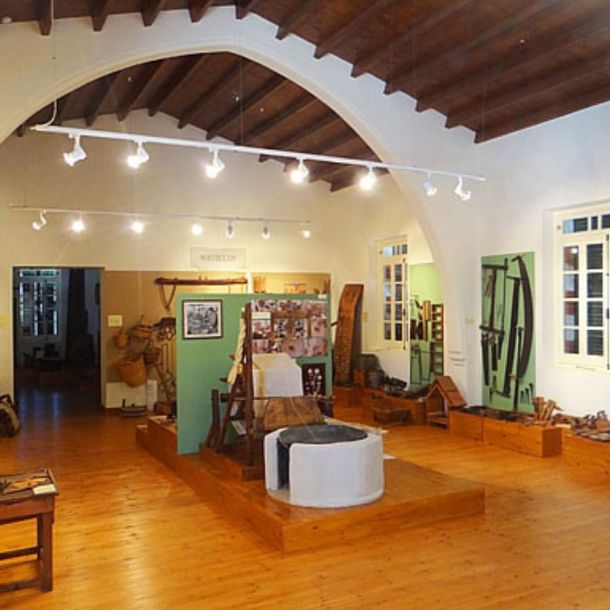
The Museum of Folkloric Art
Galata’s Museum of Folkloric Art was established in the summer of 1990 by the -then -Assistant Principal of the School, Mr. Athanasios Papadopoulou.
The Museum of Folkloric Art
Galata’s Museum of Folkloric Art was established in the summer of 1990 by the -then -Assistant Principal of the School, Mr. Athanasios Papadopoulou.
After a great deal of troubles, rushing around, visiting many villages even up to Pafos, and with the love and contribution of Galata’s inhabitants, he managed to create a beautiful Museum that was quite rich in exhibits and one of the first in Cyprus.
The Museum’s founder declares:
‹‹My ambition was to salvage -as soon as possible -tools, vessels, garments / attires, furniture, kitchenware, and a collection of items of everyday use that belong to some other eras… I was seeing them thrown away and abandoned in yards, in gardens, and in half-ruined houses, being consumed by the rain, the rust, and the all-subduing Time. I grieved for them, I felt for them, I wanted to protect them, to take care of them, to repair and maintain them, and to place them in a suitable area so that our souls will kneel before them like before holy icons. ››
All of the Museum’s items, over five hundred of them, are categorised according to profession. Tools and utilities of the shepherd, the farmer, the silk-breeder, the builder, the butcher, the potter, the lumberjack, the wine-shop owner, the shoemaker, and the carpenter. There’s a rich collection of attires, a large variety of kitchenware, and various furnishings that you will feel glad to come to and saunter in.
The openings of Galata’s F.A. Museum were conducted by the Minister- at the time -of Education, Mr. Christoforos Christoforou on the 11/11/1990.
A great benefactor of the Museum is the dear departed Michalakis Kythreotis, who “portioned” it with the amount of 2,000 C.P.
The Museum is open in the morning and in the afternoon.
Excerpts from an article of Mr. Lakis Fourouklas in the “Proina Nea” (Morning News) newspaper, 15/9/1990.
……We will now guide you through the Museum’s grounds, its entrance by itself predisposing you for what you will see next.
It is a rather small place that -at a first glance -reminds you the traditional Cypriot house with all the elements co-existing in one single room.
The entrance is a traditional, wooden, double door made of pinewood while the roof is made of reeds resting on wooden beams.
The walls are whitewashed and the whole prevailing atmosphere reminds you of the old, village houses that -as they say -are warm in the winter and cool in the summer. Despite the lack of space, Mr. Papadopoulos has managed to classify the various objects, which are contributions of the village’s inhabitants, into unities that at the same time bond together with a natural harmony.
So, the tools of the farmer, the shepherd, the builder, the shoemaker, the silk-breeder, and many others, as well as kitchenware co-exist in the same area. In a few words, the museum’s exhibits outline the village household from the beginning of the century and onward.
Right as you enter the museum, you will face a “Pouaro” (chest of drawers) that dates back to 1925 and on your left a teacher’s desk from 1915. Above them there are paintings and kitchen utensils, some of them dating back to the previous century and reminding us of other times.
On the right there are -craftily placed -traditional Cypriot attires, an old sewing machine, as well as a child’s bed made of iron and covered with a white marquisette. On our left there are all sorts of objects that are considered necessary in the traditional Cypriot house such as bread-planks, jugs, wooden shovels, rakes, demijohns for “Zivania” (strong, transparent alcoholic beverage), a loom, and other things.
Of course, tools like the ones of the shoemaker, the plough, the yoke for the horses, the “adhrakti” (kind of distaff with blades), the silk-breeder’s apparatus, the spindle, the spinning wheel, and so many others that have marked the life of our country in the beginning of the century.
And all these housed in a very small area.
For all of the museum’s exhibits there is a book where both the names of the donators as well as the date that the contributions were made are recorded.

“Folkloric Art” Museum
Galata’s Museum of Folkloric Art was established in the summer of 1990 by the -then -Assistant Principal of the School, Mr. Athanasios Papadopoulou.
The Museum of Folkloric Art
Galata’s Museum of Folkloric Art was established in the summer of 1990 by the -then -Assistant Principal of the School, Mr. Athanasios Papadopoulou.
After a great deal of troubles, rushing around, visiting many villages even up to Pafos, and with the love and contribution of Galata’s inhabitants, he managed to create a beautiful Museum that was quite rich in exhibits and one of the first in Cyprus.
The Museum’s founder declares:
‹‹My ambition was to salvage -as soon as possible -tools, vessels, garments / attires, furniture, kitchenware, and a collection of items of everyday use that belong to some other eras… I was seeing them thrown away and abandoned in yards, in gardens, and in half-ruined houses, being consumed by the rain, the rust, and the all-subduing Time. I grieved for them, I felt for them, I wanted to protect them, to take care of them, to repair and maintain them, and to place them in a suitable area so that our souls will kneel before them like before holy icons. ››
All of the Museum’s items, over five hundred of them, are categorised according to profession. Tools and utilities of the shepherd, the farmer, the silk-breeder, the builder, the butcher, the potter, the lumberjack, the wine-shop owner, the shoemaker, and the carpenter. There’s a rich collection of attires, a large variety of kitchenware, and various furnishings that you will feel glad to come to and saunter in.
The openings of Galata’s F.A. Museum were conducted by the Minister- at the time -of Education, Mr. Christoforos Christoforou on the 11/11/1990.
A great benefactor of the Museum is the dear departed Michalakis Kythreotis, who “portioned” it with the amount of 2,000 C.P.
The Museum is open in the morning and in the afternoon.
Excerpts from an article of Mr. Lakis Fourouklas in the “Proina Nea” (Morning News) newspaper, 15/9/1990.
……We will now guide you through the Museum’s grounds, its entrance by itself predisposing you for what you will see next.
It is a rather small place that -at a first glance -reminds you the traditional Cypriot house with all the elements co-existing in one single room.
The entrance is a traditional, wooden, double door made of pinewood while the roof is made of reeds resting on wooden beams.
The walls are whitewashed and the whole prevailing atmosphere reminds you of the old, village houses that -as they say -are warm in the winter and cool in the summer. Despite the lack of space, Mr. Papadopoulos has managed to classify the various objects, which are contributions of the village’s inhabitants, into unities that at the same time bond together with a natural harmony.
So, the tools of the farmer, the shepherd, the builder, the shoemaker, the silk-breeder, and many others, as well as kitchenware co-exist in the same area. In a few words, the museum’s exhibits outline the village household from the beginning of the century and onward.
Right as you enter the museum, you will face a “Pouaro” (chest of drawers) that dates back to 1925 and on your left a teacher’s desk from 1915. Above them there are paintings and kitchen utensils, some of them dating back to the previous century and reminding us of other times.
On the right there are -craftily placed -traditional Cypriot attires, an old sewing machine, as well as a child’s bed made of iron and covered with a white marquisette. On our left there are all sorts of objects that are considered necessary in the traditional Cypriot house such as bread-planks, jugs, wooden shovels, rakes, demijohns for “Zivania” (strong, transparent alcoholic beverage), a loom, and other things.
Of course, tools like the ones of the shoemaker, the plough, the yoke for the horses, the “adhrakti” (kind of distaff with blades), the silk-breeder’s apparatus, the spindle, the spinning wheel, and so many others that have marked the life of our country in the beginning of the century.
And all these housed in a very small area.
For all of the museum’s exhibits there is a book where both the names of the donators as well as the date that the contributions were made are recorded.

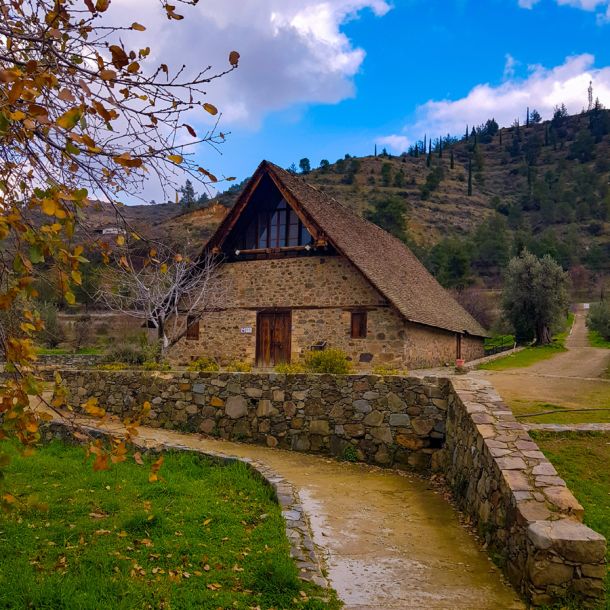
Panagia tis Podithou Unesco Church
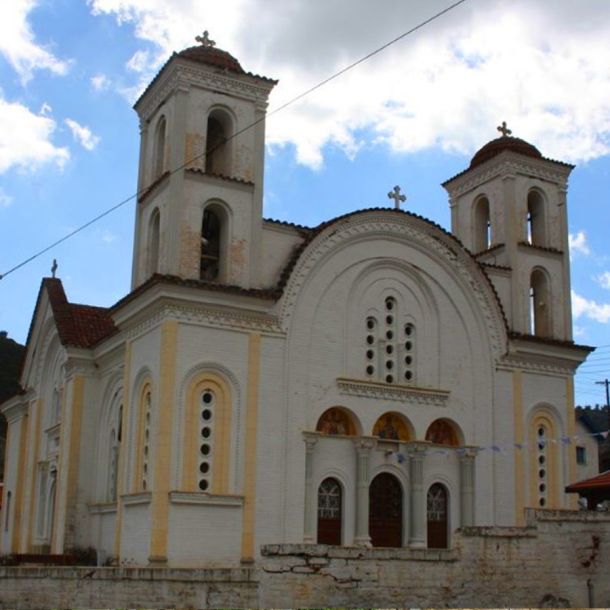
Panagia Odigitria Church
Panagia tis Podithou Unesco Church
Travelling on the Nicosia-Troodos tourist road and entering the Galata community, in your right you face the “Panagia of Podithou” church…
Panagia tis Podithou Unesco Church
“Travelling on the Nicosia-Troodos tourist road and entering the Galata community, in your right you face the “Panagia of Podithou” church. The “Panagia Eleousa” church (Blessed Virgin Mary, the all-merciful), known as “Panagia tis Podithou”, is what remained form a small Monastery that today does not exist. The church is built at the centre of a long and narrow valley close to the riverside of Klarios.
The church’s shape is rectangular and -in the east -it ends in a semicircular apse. The internal dimensions without the apse are 12 x 4 meters. It is surrounded by a Π -shaped gallery that is covered by the same V-shaped, wooden roof, which is capped by tile plates made by tile-makers from Galata. It was built in 1502 by Demetrios de Coron and his wife Helen. Demetrios and his family were one of medieval Cyprus’s families of Latin descent that were Hellenized. In 1461 Demetrios was the commander in the “Pentagia” region and was in favour of Iacovos, illegitimate brother of the legitimate queen Charlotte, who was illegitimately claiming the royal crown of Cyprus. Forty-one years later, in 1502, Demetrios de Coron built the “Panagia Eleousa” church that was later renamed “Panagia tis Podithou”.
In the external side of the west wall, the Virgin Mary is figured above the central entrance. The donators are depicted under Her throne, a couple to the left and a man to the right, having a model of the church in their midst, which they offer to the Virgin Mary. Under this composition there is the following founder’s inscription:
“THIS DIVINE AND VENERABLE CHURCH OF THE ALL-HOLY, MERCIFUL MOTHER OF GOD WAS RAISED IN THE YEAR OF OUR CHRIST 1502 THROUGH EXPENSES AND MUCH DESIRE OF KIROU MISER DEMETRI DE CORO AND HIS WIFE ELENI , FOUNDERS OF THIS HOLY MONASTERY AND THOS OF YOU WHO READ THIS PRAY FOR THEM AND WISH THEM HAPPINESS THROUGH OUR LORD, AMEN”.
The “Panagia tis Podithou” church was not decorated with frescoes in its entirety. They cover the external side of the west wall, the internal west pediment, the eastern pediment, the quadrant of the apse, and the semicircular wall of the apse.. The Crucifixion in the internal western pediment does not resemble the familiar unadorned Crucifixion of the Byzantine tradition. It is a scene with many characters, influenced by Western painting. It looks more like a religious painting with many details. The Crucified Christ and the thieves, the -westernised -soldiers on horseback, the soldier that is breaking the thieves’ legs, the Virgin Mary that tumbles to the ground unconscious, the soldiers that are rolling dice for Christ’s tunic and quarrelling, Maria Magdalene embracing the base of Christ’s Cross, and -finally -the enigmatic figure of the monk on his knees.
The Holy Towel is pictured at the top of the eastern pediment. The two “visions” of the Prophet Moses are depicted further down. On the left, Moses is receiving the plates with the Ten Commandments from the hands of God. On the right, Moses is bending down so as to untie the lace of his sandal. Before him and higher above there is a depiction of the Virgin Mary with Christ in an “engkolpio” (shape of a handbook), in the midst of the Burning Bush’s flames.
In the apse’s quadrant and in a majestic composition, the Virgin Mary is depicted enthroned and having Christ on her knees while the archangels Michael and Gabriel are turned toward the Virgin Mary, holding candles and admiring her.
This fresco, which is preserved in good condition, is very impressive.
“…It is perfect in composition, very beautiful in appearance, and quite rich in internal reflection, worked with delicacy and grace, craftsmanship and studiousness, and with clarity of perception…”
(Cyprian Studies)
Under this wonderful -oval shaped – “baby-holding” Virgin Mary, there is a depiction of the Apostles’ Holy Communion in two scenes. On the left there’s the sharing of the “Artos” (Holy Bread) and on the right the receiving of the “Enos” (Wine). Then come the following Hagiographies from the Old Testament, which are mentioned amongst the Apocrypha (secret, non-canonical gospels) of St Jacob. Joachim and Anna offering the gifts, the Prayer of Joachim, the Prayer of St. Anna, the embrace of Joachim and Anna, the Birth of the Virgin Mary.
The church’s icon screen is considered as one of the best woodcut, gild-edged icon screens of the 16 th century. Unfortunately, neither the Cross up above nor the small icons high up the icon screen are in existence. The Bema Doors of the temple, works of art with great value, have been stolen in the beginning of 2003 and their whereabouts are unknown.
The name “Podithou” or “Podythou”.
The centre of the entire hagiography in the “Panagia tis Podithou” church is the Enthroned Virgin Mary Holding the Infant Christ in the apse of the Holy Bema. The positioning of the Burning Bush at the highest point of the temple is an innovation emphasising the “Vision” of Moses.
“Untie the shoes from your feet” said God to Moses when he stood before the Burning Bush in Mount Horeb, ” Apodithou ta ipodimata sou” (in Greek, remove your footwear), the priests and preachers would explain to the faithful, analysing the words of God toward Moses. Thus the name “Panagia tis Podythou” (Virgin Mary of Podythou) or “Po’ythou” in the dialect of the people until today.
In the south-east of the church there was the two-level house, the ground level of which was known as the “School of the Podithou Monastery”. Unfortunately it was demolished in 1950.
In 1735 the Russian traveller Vasilios Barsky refers to the monastery of “Podithou”, which he visited. “It ha a small church covered in tiles…” He mentions the harsh and miserable conditions under which the two monks live because of the Moslems, which grab by force foods and drinks.
UNESCO has included the church of “Panagia Podithou” amongst the 10 Byzantine churches of Cyprus that were deemed to be of particular importance and were included in the list of World cultural heritage.
Panagia Odigitria Church
In the middle of the village, higher above the main road, stands the church of “Panagia Odegetria” (Virgin Mary, the guiding one)…
Panagia Odigitria Church
In the middle of the village, higher above the main road, stands the church of “Panagia Odegetria” (Virgin Mary, the guiding one)
The Metropolitan Bishop of Keryneia, Makarios II, used to call the church as “mikri Faneromeni” (meaning “a smaller version of the Faneromeni church”) so as to emphasise its splendour by comparing it to that of Nicosia’s.
It was constructed in 1930 with donations and voluntary work by the community’s inhabitants.
A built-in plate that is found in the north entrance reports:
“DURING THE TERM OF THE ALL-HOLY METROPOLITAN BISHOP OF KERYNEIA MAKARIOS WAS THIS VENERABLE CHURCH OF THE HOLY MOTHER OF GOD RAISED OVER THE POSITION OF THE OLD CHURCH WITH HIS EXPENSES AND THE CONTRIBUTION OF THE PIOUS CHRISTIANS. THE CONSTRUCTION STARTED ON 2/1/1929 AND WAS COMPLETED 30/10/1930 DESIGN AND SUPERVISION OF ARCHITECT FILIPOS LOIZOS”
The completion of such a structure within a year and a half is a true feat, considering the means of those days.
The built-in plate from its inauguration says:
“THIS CHURCH IS INSTITUTED DURING THE TERM OF METROPOLITAN BISHOP OF KERYNEIA MAKARIOS. WITH DONATIONS FROM EVRIPIDES GEORGIADIS AND HIS WIFE ANNA -FROM STROVOLOS -IN THE YEAR OF THE LORD 1930 MONTH OF NOVEMBER 2 A DAY SUNDAY”
The church’s entire furnishing was completed through donations by the inhabitants and monks that served in various monasteries, especially that of Kykkos. Everywhere one can read, “EXPENSES PAID BY…”.
For example, in the High Altar, ” EXPENSES PAID BY THE PRIEST AND MONK NIKODEMOS KYKKOTIS, FROM GALATA”, “EXPENSES PAID BY IACOVOS ARNOPOULOU”, et al.
Great benefactors of the community and donators of the church are the dear departed Church Steward of Kykkos, Panaretos, the Vicar of Keryneias’s throne, Iacovos Arnopoulos, and others.
The church is divided in three aisles by two series of columns and has a dome. The internal decoration of the church is beautiful, opulent, and imposing. The entire church is decorated with hagiographies.
In the church’s vestry several Holy Vessels, veils, vestments, ancient buckles, censers, a cross, a Gospel from 1745, and other items are kept.

Panagia tis Podithou Unesco Church
Travelling on the Nicosia-Troodos tourist road and entering the Galata community, in your right you face the “Panagia of Podithou” church…
Panagia tis Podithou Unesco Church
“Travelling on the Nicosia-Troodos tourist road and entering the Galata community, in your right you face the “Panagia of Podithou” church. The “Panagia Eleousa” church (Blessed Virgin Mary, the all-merciful), known as “Panagia tis Podithou”, is what remained form a small Monastery that today does not exist. The church is built at the centre of a long and narrow valley close to the riverside of Klarios.
The church’s shape is rectangular and -in the east -it ends in a semicircular apse. The internal dimensions without the apse are 12 x 4 meters. It is surrounded by a Π -shaped gallery that is covered by the same V-shaped, wooden roof, which is capped by tile plates made by tile-makers from Galata. It was built in 1502 by Demetrios de Coron and his wife Helen. Demetrios and his family were one of medieval Cyprus’s families of Latin descent that were Hellenized. In 1461 Demetrios was the commander in the “Pentagia” region and was in favour of Iacovos, illegitimate brother of the legitimate queen Charlotte, who was illegitimately claiming the royal crown of Cyprus. Forty-one years later, in 1502, Demetrios de Coron built the “Panagia Eleousa” church that was later renamed “Panagia tis Podithou”.
In the external side of the west wall, the Virgin Mary is figured above the central entrance. The donators are depicted under Her throne, a couple to the left and a man to the right, having a model of the church in their midst, which they offer to the Virgin Mary. Under this composition there is the following founder’s inscription:
“THIS DIVINE AND VENERABLE CHURCH OF THE ALL-HOLY, MERCIFUL MOTHER OF GOD WAS RAISED IN THE YEAR OF OUR CHRIST 1502 THROUGH EXPENSES AND MUCH DESIRE OF KIROU MISER DEMETRI DE CORO AND HIS WIFE ELENI , FOUNDERS OF THIS HOLY MONASTERY AND THOS OF YOU WHO READ THIS PRAY FOR THEM AND WISH THEM HAPPINESS THROUGH OUR LORD, AMEN”.
The “Panagia tis Podithou” church was not decorated with frescoes in its entirety. They cover the external side of the west wall, the internal west pediment, the eastern pediment, the quadrant of the apse, and the semicircular wall of the apse.. The Crucifixion in the internal western pediment does not resemble the familiar unadorned Crucifixion of the Byzantine tradition. It is a scene with many characters, influenced by Western painting. It looks more like a religious painting with many details. The Crucified Christ and the thieves, the -westernised -soldiers on horseback, the soldier that is breaking the thieves’ legs, the Virgin Mary that tumbles to the ground unconscious, the soldiers that are rolling dice for Christ’s tunic and quarrelling, Maria Magdalene embracing the base of Christ’s Cross, and -finally -the enigmatic figure of the monk on his knees.
The Holy Towel is pictured at the top of the eastern pediment. The two “visions” of the Prophet Moses are depicted further down. On the left, Moses is receiving the plates with the Ten Commandments from the hands of God. On the right, Moses is bending down so as to untie the lace of his sandal. Before him and higher above there is a depiction of the Virgin Mary with Christ in an “engkolpio” (shape of a handbook), in the midst of the Burning Bush’s flames.
In the apse’s quadrant and in a majestic composition, the Virgin Mary is depicted enthroned and having Christ on her knees while the archangels Michael and Gabriel are turned toward the Virgin Mary, holding candles and admiring her.
This fresco, which is preserved in good condition, is very impressive.
“…It is perfect in composition, very beautiful in appearance, and quite rich in internal reflection, worked with delicacy and grace, craftsmanship and studiousness, and with clarity of perception…”
(Cyprian Studies)
Under this wonderful -oval shaped – “baby-holding” Virgin Mary, there is a depiction of the Apostles’ Holy Communion in two scenes. On the left there’s the sharing of the “Artos” (Holy Bread) and on the right the receiving of the “Enos” (Wine). Then come the following Hagiographies from the Old Testament, which are mentioned amongst the Apocrypha (secret, non-canonical gospels) of St Jacob. Joachim and Anna offering the gifts, the Prayer of Joachim, the Prayer of St. Anna, the embrace of Joachim and Anna, the Birth of the Virgin Mary.
The church’s icon screen is considered as one of the best woodcut, gild-edged icon screens of the 16 th century. Unfortunately, neither the Cross up above nor the small icons high up the icon screen are in existence. The Bema Doors of the temple, works of art with great value, have been stolen in the beginning of 2003 and their whereabouts are unknown.
The name “Podithou” or “Podythou”.
The centre of the entire hagiography in the “Panagia tis Podithou” church is the Enthroned Virgin Mary Holding the Infant Christ in the apse of the Holy Bema. The positioning of the Burning Bush at the highest point of the temple is an innovation emphasising the “Vision” of Moses.
“Untie the shoes from your feet” said God to Moses when he stood before the Burning Bush in Mount Horeb, ” Apodithou ta ipodimata sou” (in Greek, remove your footwear), the priests and preachers would explain to the faithful, analysing the words of God toward Moses. Thus the name “Panagia tis Podythou” (Virgin Mary of Podythou) or “Po’ythou” in the dialect of the people until today.
In the south-east of the church there was the two-level house, the ground level of which was known as the “School of the Podithou Monastery”. Unfortunately it was demolished in 1950.
In 1735 the Russian traveller Vasilios Barsky refers to the monastery of “Podithou”, which he visited. “It ha a small church covered in tiles…” He mentions the harsh and miserable conditions under which the two monks live because of the Moslems, which grab by force foods and drinks.
UNESCO has included the church of “Panagia Podithou” amongst the 10 Byzantine churches of Cyprus that were deemed to be of particular importance and were included in the list of World cultural heritage.

Panagia Odigitria Church
In the middle of the village, higher above the main road, stands the church of “Panagia Odegetria” (Virgin Mary, the guiding one)…
Panagia Odigitria Church
In the middle of the village, higher above the main road, stands the church of “Panagia Odegetria” (Virgin Mary, the guiding one)
The Metropolitan Bishop of Keryneia, Makarios II, used to call the church as “mikri Faneromeni” (meaning “a smaller version of the Faneromeni church”) so as to emphasise its splendour by comparing it to that of Nicosia’s.
It was constructed in 1930 with donations and voluntary work by the community’s inhabitants.
A built-in plate that is found in the north entrance reports:
“DURING THE TERM OF THE ALL-HOLY METROPOLITAN BISHOP OF KERYNEIA MAKARIOS WAS THIS VENERABLE CHURCH OF THE HOLY MOTHER OF GOD RAISED OVER THE POSITION OF THE OLD CHURCH WITH HIS EXPENSES AND THE CONTRIBUTION OF THE PIOUS CHRISTIANS. THE CONSTRUCTION STARTED ON 2/1/1929 AND WAS COMPLETED 30/10/1930 DESIGN AND SUPERVISION OF ARCHITECT FILIPOS LOIZOS”
The completion of such a structure within a year and a half is a true feat, considering the means of those days.
The built-in plate from its inauguration says:
“THIS CHURCH IS INSTITUTED DURING THE TERM OF METROPOLITAN BISHOP OF KERYNEIA MAKARIOS. WITH DONATIONS FROM EVRIPIDES GEORGIADIS AND HIS WIFE ANNA -FROM STROVOLOS -IN THE YEAR OF THE LORD 1930 MONTH OF NOVEMBER 2 A DAY SUNDAY”
The church’s entire furnishing was completed through donations by the inhabitants and monks that served in various monasteries, especially that of Kykkos. Everywhere one can read, “EXPENSES PAID BY…”.
For example, in the High Altar, ” EXPENSES PAID BY THE PRIEST AND MONK NIKODEMOS KYKKOTIS, FROM GALATA”, “EXPENSES PAID BY IACOVOS ARNOPOULOU”, et al.
Great benefactors of the community and donators of the church are the dear departed Church Steward of Kykkos, Panaretos, the Vicar of Keryneias’s throne, Iacovos Arnopoulos, and others.
The church is divided in three aisles by two series of columns and has a dome. The internal decoration of the church is beautiful, opulent, and imposing. The entire church is decorated with hagiographies.
In the church’s vestry several Holy Vessels, veils, vestments, ancient buckles, censers, a cross, a Gospel from 1745, and other items are kept.
Activities
and Attractions
Cyprus agrotourism offers a variety of places to visit. Places, both familiar and unfamiliar, that will soothe you and provide you with utter serenity and beauty. From Galata to other villages, one can escape and experience a lovely and easygoing atmosphere.
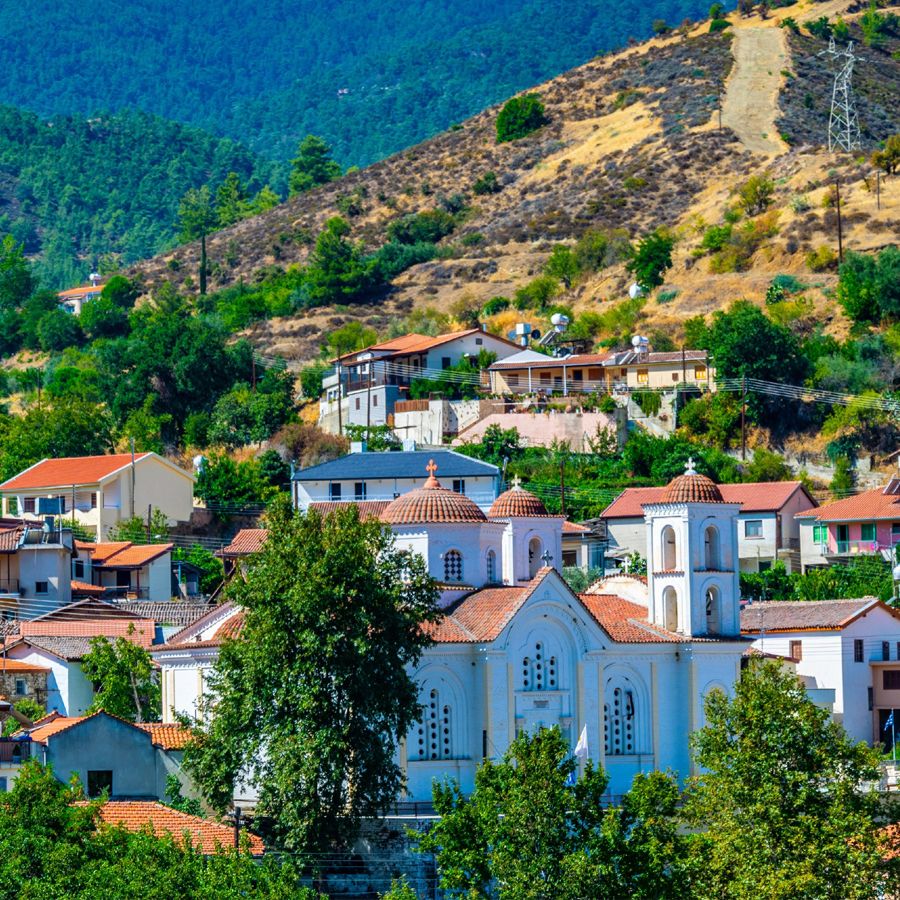
Old Buildings
Old Galata
Galata’s traditional houses possess grace and beauty. Especially impressive are the ones with the wooden balconies, houses along the central road leading to Kakopetria that had a “parkoni me parmatzia” (a balcony with a grating). Some have been reconditioned while it expected that -gradually -the rest will also be reconditioned, being under the protection of the Antiquities Department.
Galata is also known as the “village of balconies” because of the many houses that had one. Almost all the traditional houses had two floors. The balcony was the wooden protrusion towards the main road, about 1.5 meters in width and 2.5 meters in length, being an extension of the second floor. This protrusion, which was roofed, was supported by 3 external beams so as to be more steady and firm, having all around it the gratings at a height of about 1 meter. These were either square or rectangular wooden frames with diagonal striped pieces, one firmly attached to the other. The village’s older balconies are those located across the chapel of St George and they connect all the way to Maragkos’s Caravansary. The owners were the teacher Lampros Hadji-Gabriel, Champis Mourtziis, Dimosthenis Kynigopoulos, and Socratis Galatis who also kept a coffee-house at the ground-floor and the Caravansary that was renovated, “Galata’s Museum of Folkloric Art” being housed at its ground-floor. They were all built in 1900.
Also very beautiful are the balconies to the west, some of them being reconditioned. These are the ones belonging to the famous hotel of “Fysa-Nikolas”, the first hotel in the Solia region, to Diogenis Georgios, to Papaloizos, and others.
The balconies of Galata were at the height of their glory during the afternoons of summer. The whole family, sitting in the balcony, enjoyed the coolness of the nearby river and watched the traffic of the main street. The father rested after the day’s hard work. The mother knitted or worked the loom, which most of the times was placed in the balcony. Grandma spun cotton or wool using the spindle, while the children shouted along with the neighborhood’s children in the balconies next door. A wonderful painting-like image made in Galata from a few decades ago, back when Galata was the “heart of Solia” and the center of trade, of buying and selling of agricultural and stockbreeding products, and also a meeting point for the people of Solia.
The rural house:
The rural house usually had two floors. From the foundations and up to a meter high, it was built with stones from the river or the mountain. From that point and up to the roof it was built with mud-bricks that the inhabitants of Galata made themselves. The roof either had local, curved tiles or beams, reeds, and an earthen cover, known as “domata”. Over the earthen roof they would spread alluvial clay (known as “konnos”) that was impermeable by the water of rain. The floor was made of brick-slabs or marble. The “mantalia” and the “romanisia” (plural, bolts – latches) were necessary for opening, closing, and securing the doors or the main gateway to the street. The stable for the animals (oxen, donkeys or horses, goats) was at the ground floor. Farther on stood the barn and then the stockroom with the large or small earthenware jars and the pitchers. In them they stored all their produce, wheat, barley, flour, wine, “zivania” (strong, transparent, alcoholic beverage), vinegar, oil, olives, ant he “kourellos” (amphora-like pot with wide mouth) with the “challoumia” (plural, white cheese of Cyprus), and various other items. In the yard there was the oven for the baking of bread and -close to it -piles of wood, both for the fireplace in the winter and for the oven. Also essential in the yard were the “goumas” (hen pen) with the chicken and a small shed for the pig, which each family necessarily raised and fattened. The pig was slaughtered during Christmas and a part of its meat was used to make the “pasta” (dried meat), sausages, “lountza” (kind of dried meat), the “karkalamia” (the skeletal parts), lard, and “zalatina” (dried meat pieces in jelly and spices). Other meats they fried and placed in the tar-coated pitchers along with pig grease until the summer for the harvest-time. Every house had its guard, a dog, as well as one or two cats.
On the second floor there were: the large room in the middle with a fire-stove and all the items necessary for the kitchen -the utensils, the dinning table, the seats -some chairs and the loom. This was the most frequented area for the family.
The other rooms -1,2 or 3 of them -were the bedrooms with the chests or trunks, in which all the garments, the sheets and generally the trousseaus of the family were kept. In the balconies they sat so as to rest and also entertained relatives or friends.
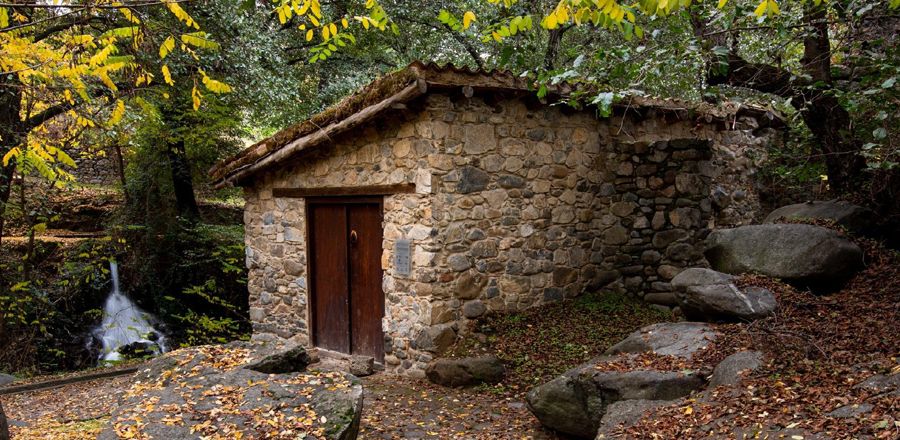
Water Mills
Water Mills
The water mills of Galata were four in older times:
• The “Trooditissa” water mill.
• The water mill “tou Kyrillou” (of Kyrillos), which first belonged to “Kermitzies”.
• The water mill of “Rodou”,
which belonged to the Monastery of Podithou.
• The water mill of “Pavlaena”.
Unfortunately, the two water mills of Trooditissa and Pavlaenas do not exist today.
The Water Mill of “Rodou”
The water mill of “Rodou” was reconditioned in 2002 but does not operate (grind) and belonged to the Monastery of Podithou.
The Water Mill “tou Kyrillou” (of Kyrillos)
The only water mill that grinds like old times is the mill of “Kyrillos” that today stands in the middle of the village next to the Klarios river. This mill was constantly grinding until 1976. During the Turkish invasion it offered bread for both the locals and the thousands of refugees that had then swarmed the Solea region.
The water mill of “Kyrillos” has been reconditioned and is a point of attraction for many visitors, local and foreign.

River Clarios
River Clarios
A green veil created with nature’s most beautiful colours covers the village of Kakopetria. Pieces of land covered with wild vegetation mingle with cultivated pieces of land creating a magical scenery.
This idyllic image of the village is completed by the two side-rivers of the River Clarios which are united in the heart of Kakopetria, freely giving their water to the village. Kakopetria constantly enjoys the sound of the streams which create a sweet melody which in turn provides peace and quiet.

Galatas Fountains
Galatas Fountains
• The fountain of “Pogiatzies”
The fountain of “Pogiatzies” is located quite close to the Museum of Folkloric Art, to the right on the way to Kakokpetria. You go down some steps and face a vaulted fountain while the water of a small stream flows by your feet, coming from “Esso” (Inner) Galata and then joining with the river Klarios.
At the fountain’s highest point there is a built-in plate with the date 1733 and the sign “IC-XC NI-KA”.
It is called “Pogiatzie’s fountain” because this is where Demosthenis Loizou Pogiatzies used to wash the “vrakes” (plural, villager’s pants / galligaskins) that he dyed. In those days, the white “vrakes” that they used to saw had to be dipped in a special concoction made of sulphuric copper and dry pomegranate leafs -about 4 to 5 times -until they were blackened. (Details in the book “Galata, then and now”).
• The “Mastre Philippou” fountain
The “Mastre Philippou” (Master Philippos) fountain is found close to the village’s plaza.
It is written on it:
‹‹ FOUNTAIN OF MASTRE PHILIPPOU›› 1986
It is the property of the dear departed Filippos Loizou.
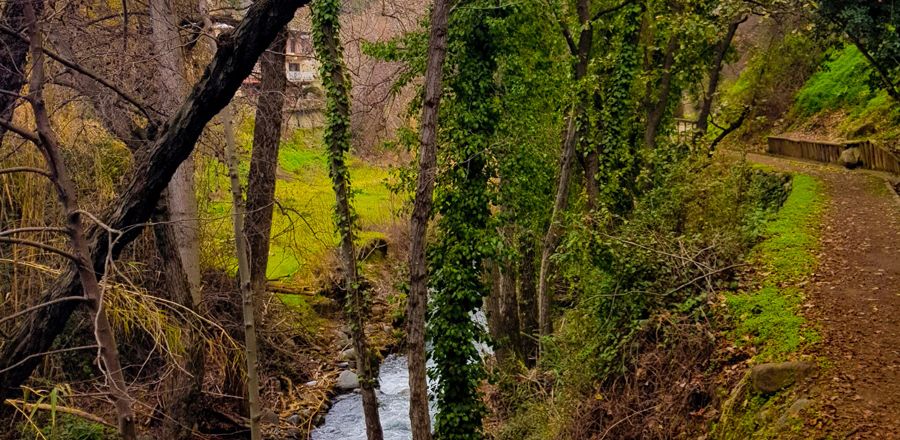
Archangel Rodou’s Mill Nature Trail
Archangel Rodous Mill Nature Trail
This nature trail begins from the small church of “Archangelos” (Archangel) and ends in Rodou’s Mill, covering a distance of about 1 kilometre.
In the beginning you are walking on a trail that is parallel to a small channel made of concrete and soon you find yourself next to the river Klarios.
It is a trail of exquisite beauty higher above and along the riverside. On your right you see the river flowing and hear the characteristic splashing of the water, and you see the towering trees inside the watercourse and in the riverbanks, usually being oriental alders, plane-trees, aspens, reeds, and others.
In the route from Archangel and on your left you see a drain of excellent craftsmanship, carrying water for the irrigation in the nearby tracts of land, as well as a wide range of Cyprus’s flora: Myrtles, ivies, carobs, turpentine-trees, prickly bushes, walnut trees, other fruit-bearing trees and a variety of bushes and aquatic vegetation.
However, once you get to Rodou’s Mill with its two imposing apses, the raceway at their top where the water was transferred, since it had to be falling from up above and have enough might to turn the millstones for the grinding of the cereals, the reconditioned house of the mill, the picturesque boulders here and there, the small bridge’s plaza, the thick and varied vegetation, and the twittering of the birds or the trolling of the cicada will enchant you.
You will surely want to sit on the rocks and dawdle away, muse or rest, and perhaps -unwittingly -whistle a tune yourself.
You will not regret it, if you walk through this short but entirely captivating route. It combines many things. First, a pilgrimage to and a study of the Byzantine churches of “Podithou” and “Archangelos” and then the enjoyable route to Rodou’s Mill.

Central Square
Central Square
The Forestry Department has created a number of trails carefully designed to cover areas of rich natural vegetation and cultural interest. They have been landscaped on gentle gradients and are, as a rule, circular so that all age groups can easily use them.
In many cases, there are signposts in place, to indicate the starting point of the trail, as well as flora and geology features along the route.
Although walking in Cyprus can be enjoyed throughout the year, the recommended seasons are during late Autumn (November) and spring, when the Cyprus rural and forest areas are at full bloom.
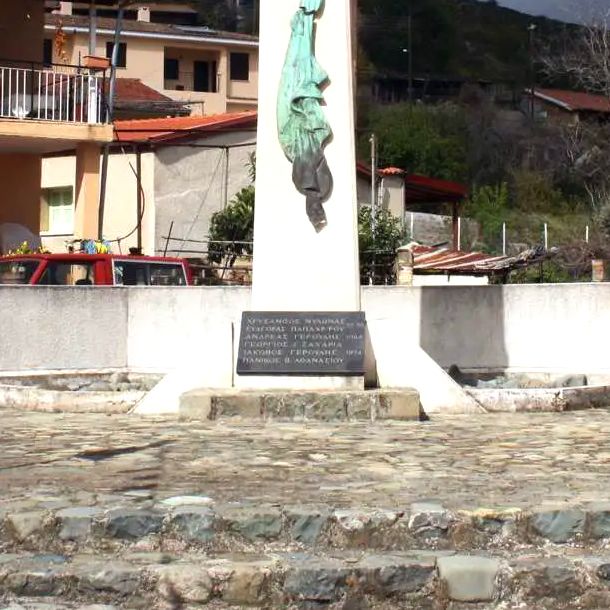
Heroes Monument
Heroes Monument
Galata, wanting to express its admiration, its love, and its pride for its heroic children, for eternal remembrance and exemplification to the future generations, has raised in their honour a modest monument. It is a column of 5 metres height with an oblong, brazen piece attached to it, depicting the tattered, khaki shirt of the guerrilla who fell fighting for the freedom of our Cyprus. At the base of the monument, upon a slab of granite, the name of all of Galata’s brave men are written as follows:
– CHRYSANTHOS MYLONAS
– EVAGORAS PAPACHRISTOFOROU 55-59
– ANDREAS GEROUDES 1964
– GEORGIOS ZACHARIA
– IACOVOS GEROUDES 1974
– PANAGIOTES ATHANASIOU
Every year a national memorial takes place and wreaths are deposited in a ceremony in front of the monument.
The Heroes’ Monument is on our right as we enter the “Panagia Odegetria” church in the middle of the village.
The expenses for the entire project were assumed by the brothers Andreas and Iacovos Philippou.
The sculptor who created the Heroes’ complex is Andros Kazamias.
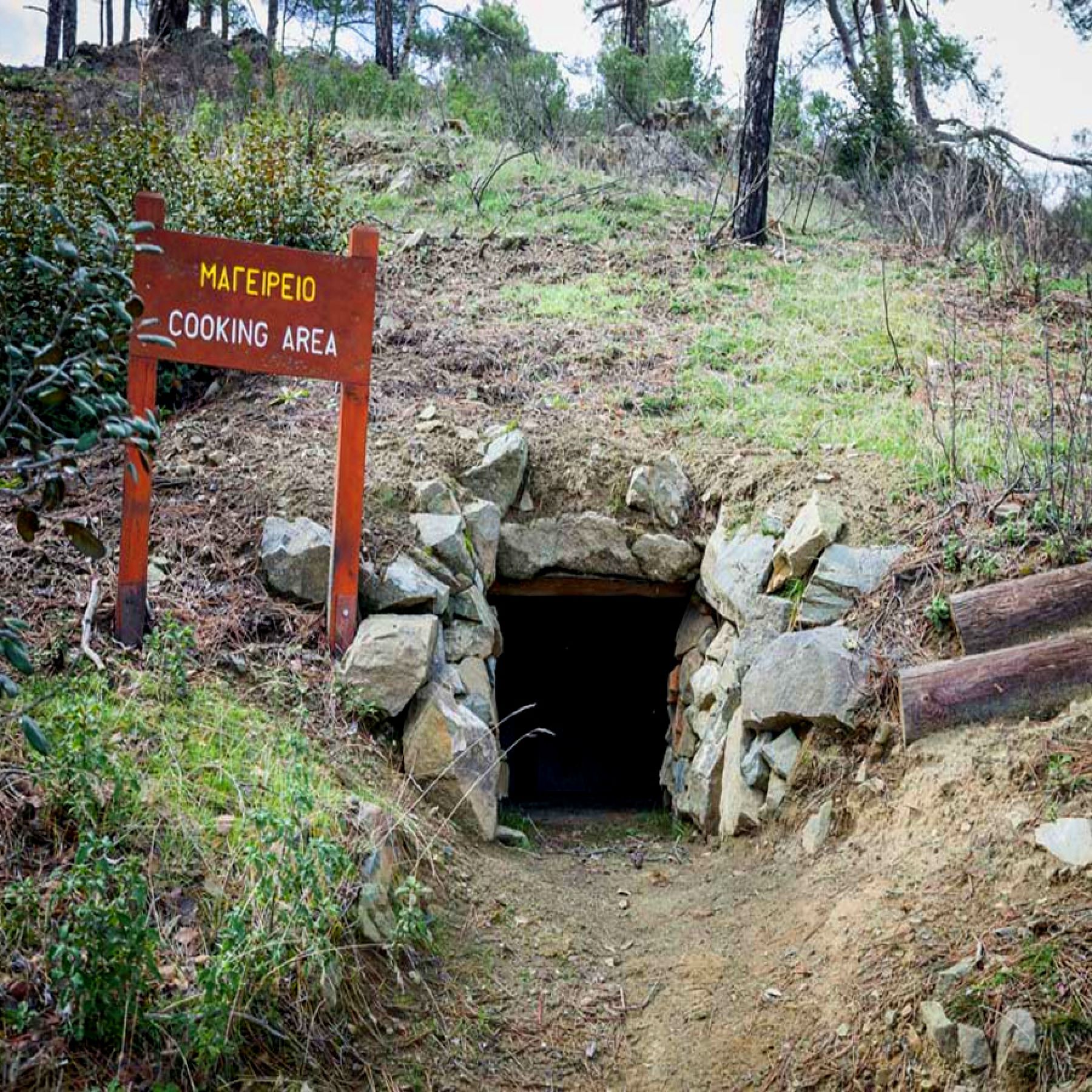
EOKA Hideouts / The heroes of Galata
EOKA Hideouts / The heroes of Galata
Chrysanthos Mylonas
Chrysanthos Mylonas was an E.O.K.A. guerrilla while he was still a student at the 5 th grade of Solea’s High School. He was serving the cause along with his cousin Evagoras Papachristoforou. Both were murdered by the traitor Costas Ashiotes next to their hideout, in the Alignos venue of Galata on 7/10/1957.
Evagoras Papachrsistoforou
Evagoras Papachristoforou was born in Kato Amiantos and was a cousin of Chrysanthos Mylonas. He was the leader of the guerrilla group that had its hideout in the Alignos venue, about 5 kilometres west of Galata.
On the 7 th of October 1957, Costas Ashiotes “at noon murdered” the group leader inside the hideout while he was sleeping. The murderer “claimed that he acted so because he was afraid that he would murder him” (Memoirs of Georgios Griva Digeni). Later, around midnight of the same day, he also murdered Chrysanthos Mylonas who had just arrived in the hideout along with Charalambos Koukoularides, the two being the group’s suppliers.
Andreas Geroudes
Andreas Geroudes was a senior in the Pedagogical Academy when -during the Turkish insurrection of 1964 -he went to Pafos along with other youths in order to serve his country. He took part in the battle of Ktima, which took place on the 9 th of March 1964. There he died heroically in combat.
Iacovos Geroudes
Iacovos Geroudes was a brother of Andreas Geroudes. While driving his commander’s car in Keryneia, he was shot by the Turks that had then invaded the island and was killed. This happened on 22/7/1974.
Panagiotes Athanasiou
Panagiotes Athanasiou was serving in the National Guard during 1974. He was a machine gunner in the “Agios Pavlos” posts close to ELDYK (Greek Forces in Cyprus). On the 15 th of August Panagiotes was located in a trench with his machine gun. Two other manned trenches were positioned a few meters to the left and to the right of his trench. On that day hard and tenacious battles against the Turkish invaders were taking place. They were fighting heroically. The Turkish forces were many and managed to enter Panagiotes’s post. The were enraged because they saw many dead Turkish men. The immediately shot Panagiotes in cold blood along with his two comrades. He was buried in the Military cemetery of Lakatamia. Later, his bones were buried at the cemetery of his community in Galata.
Georgios Ioannou Zacharia
After graduating from Solea’s High School in 1971, Georgios Zacharia enlisted in the National Guard. He served for 13 months. He was an electrician. He was called to go up in Mount Pentadaktylos from Sichari of Keryneia were he was posted in order to repair the unit’s telephone. Because there wasn’t a jeep available to transfer him, he climbed up a water-wagon that was then heading there. At some point on the way the newly dug road subsided and the water-wagon tumbled. Private Georgios Zacharia was seriously wounded. He was transferred to the general Hospital of Nicosia where he died on the 22 nd of August 1972.
All Accommodation
The best Restaurant in the Village of Galata
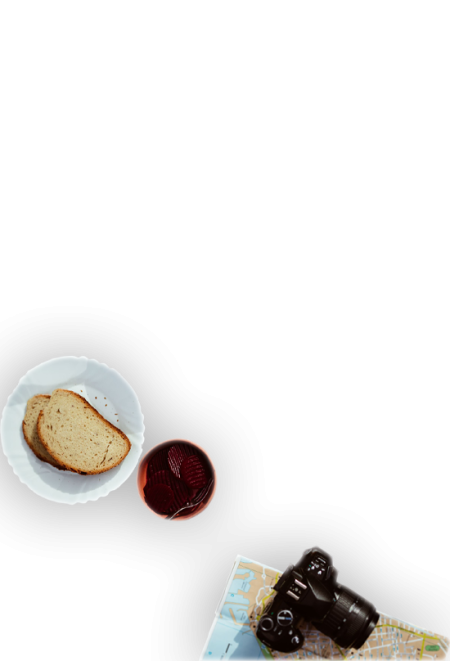
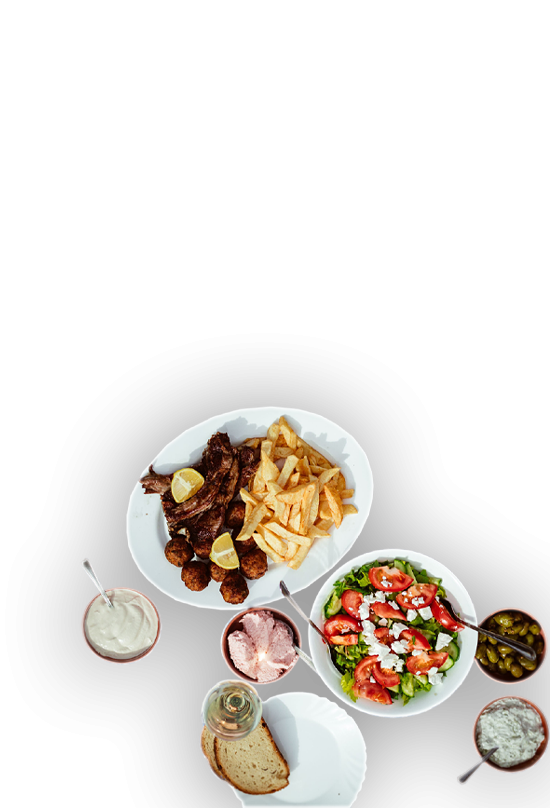
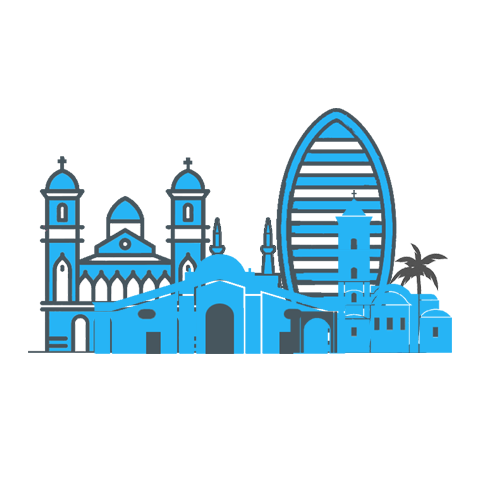 Cities/District
Cities/District Monasteries
Monasteries Unesco Churches
Unesco Churches Food & Drink
Food & Drink  Limassol to Nicosia
Limassol to Nicosia Famagusta to Machairas
Famagusta to Machairas Kourion to West Akamas
Kourion to West Akamas Hotels
Hotels Villas
Villas Agrotourism Accommodations
Agrotourism Accommodations Flights
Flights Rent a Car
Rent a Car